Community Group

Is group study beneficial for exam preparation ?
Group study offers benefits for exam preparation, including knowledge sharing, motivation, improved comprehension, social skills development, stress relief, and better time management. Its success depends on factors like group dynamics and commitment levels.

What are some tips for leading a successful study group ?
Leading a successful study group requires careful planning, effective communication, and strong leadership skills. To achieve this, it is important to set clear objectives, organize meetings effectively, encourage active participation, foster collaboration and teamwork, and evaluate progress regularly. By following these tips, you can create a productive and enjoyable learning experience for all members of your study group.

How can I effectively communicate with my study group members ?
Effective communication is essential for the success of any study group. To communicate better with your study group members, set clear objectives, use active listening skills, encourage open discussion, provide constructive feedback, and stay organized. By following these tips, you can work together to achieve your academic goals.
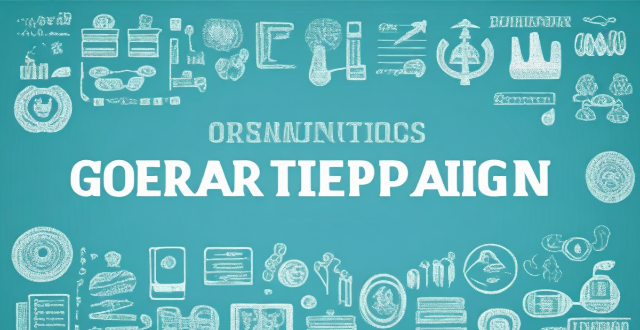
What are the best strategies for organizing a study group ?
This text is a guide on organizing a study group, emphasizing the importance of clear goals, selecting compatible members, establishing rules, planning effective meetings, sharing resources, incorporating different learning styles, evaluating progress, maintaining motivation, leveraging technology, and having a backup plan. The strategies outlined aim to enhance academic performance and collaboration skills among group members.

What are the psychological benefits of group exercise for older adults ?
The article discusses the psychological benefits of group exercise for older adults, including increased social interaction, enhanced cognitive function, and increased motivation and accountability. It emphasizes how group exercise can reduce feelings of isolation and loneliness, improve mood and mental health, stimulate brain activity, delay the onset of cognitive decline, provide peer support and encouragement, and promote goal setting and achievement. Overall, it suggests that participating in group exercise activities can greatly enhance the overall well-being of older adults and contribute to a higher quality of life as they age.

What role do sports clubs and community centers play in promoting public health initiatives ?
Sports clubs and community centers significantly contribute to public health efforts by offering programs and services that encourage physical activity, provide educational opportunities, build social support networks, target specific demographics, and collaborate with health organizations. These establishments play a crucial role in promoting healthier lifestyles through their facilities, workshops, group activities, youth and senior programs, and partnerships with hospitals and awareness campaigns. By catering to diverse age groups and interests, sports clubs and community centers help foster a culture of health and wellness within communities.

What are the advantages and disadvantages of working in a study group ?
The advantages of working in a study group include improved learning outcomes, enhanced collaboration skills, motivation and accountability, and exposure to diverse perspectives. However, the disadvantages include time management challenges, unequal participation, lack of individual attention, and personality conflicts. To make the most of a study group, it is important to establish clear guidelines, set expectations for participation, and communicate openly with group members about any issues that arise.

How can I find a sports club or group in my area to join ?
Finding a sports club or group in your area can be an exciting and rewarding experience. To help you find one, follow these steps: 1. Determine your interests by identifying the sports or activities that interest you. 2. Research online using directories like Sports Club Finder, Meetup, and Facebook Groups. 3. Check local recreation centers and parks for available options. 4. Ask friends, family members, or coworkers for recommendations. 5. Attend local sporting events to interact with other athletes and learn about nearby clubs. 6. Join online forums and social media groups dedicated to specific sports. 7. Be open to trying new things and exploring different sports or activities.

How can I encourage active engagement in a study group ?
This article discusses strategies for encouraging active engagement in a study group, including setting clear goals and objectives, fostering a collaborative environment, assigning roles and responsibilities, providing opportunities for feedback and reflection, using technology to facilitate engagement, and offering incentives for participation. The author emphasizes the importance of active engagement for the success of a study group and encourages readers to make it a priority from the start.
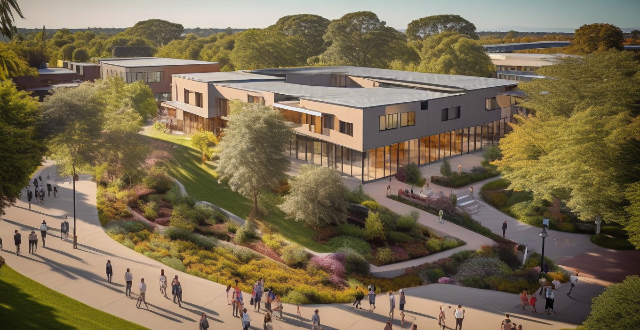
How can immigrants effectively integrate into a new community ?
Effective integration of immigrants into a new community involves learning the local language, engaging with the community, embracing cultural differences, building a support network, seeking out resources, and being patient and persistent. These strategies can help immigrants communicate effectively, find employment opportunities, understand the culture, make friends, and navigate the legal processes involved in immigration.

What are the benefits of collaborating in a study group ?
**Benefits of Collaborating in a Study Group** Collaborating in a study group offers numerous benefits to students, including enhanced learning and understanding, improved academic performance, development of valuable skills, and emotional and social benefits. By participating in study groups, students can gain different perspectives, active participation, immediate feedback, better grades, increased retention, preparation for class discussions, communication skills, teamwork and collaboration, critical thinking, time management, reduced anxiety and stress, building friendships, increased motivation, and networking opportunities. Overall, collaborating in a study group is an excellent way to make the most out of your educational journey while building lasting relationships along the way.

What kind of group discounts are available at local restaurants ?
The article provides a comprehensive overview of the different group discounts that local restaurants offer to attract larger parties. These discounts include early bird specials, set menu options, bulk discounts, happy hour deals, birthday/special occasion deals, reservation-based discounts, loyalty programs, referral incentives, seasonal promotions, and split bill facilities. The article also offers tips for maximizing these discounts, such as planning ahead, asking about specials, negotiating, checking online, joining loyalty programs, combining offers, booking in advance, considering off-peak times, sharing the love, and being flexible. By utilizing these strategies, groups can enjoy memorable meals without breaking the bank.

How can I handle disagreements or differing opinions in a study group ?
In the text, the author provides a guide on how to handle disagreements in a study group. They suggest listening actively, staying calm and respectful, using "I" statements, finding common ground, compromising, taking breaks, and seeking mediation. The author emphasizes that handling disagreements requires patience, empathy, and effective communication skills. Overall, they argue that learning how to handle disagreements effectively can lead to stronger relationships and better outcomes.

How can I make the most out of group study sessions ?
Group study sessions can be an incredibly effective way to learn and review material. By pooling knowledge, sharing insights, and engaging in collaborative learning, students can deepen their understanding of complex topics and improve their academic performance. To make the most out of group study sessions, consider the following strategies: ## Setting Clear Objectives - **Establish Goals**: Before diving into a study session, it's important to set clear objectives. Decide what topics or areas you want to cover and what you hope to achieve by the end of the session. - **Create an Agenda**: Prepare a structured agenda that outlines the topics to be discussed and the time allocated for each. This helps keep the study session focused and productive. ## Preparation is Key - **Assign Pre-reading**: Encourage all group members to do some pre-reading or pre-work before the session. This ensures everyone comes prepared with basic knowledge and questions to discuss. - **Bring Materials**: Each participant should bring relevant textbooks, notes, or any other materials that could facilitate the discussion. ## Active Participation - **Engage Actively**: Encourage all members to actively participate by asking questions, sharing insights, and contributing to discussions. - **Take Turns Teaching**: Rotate the role of "teacher" among group members. Research shows that teaching a concept to others reinforces your own understanding. ## Promote Collaboration - **Share Different Perspectives**: Each member may have a unique approach or perspective on the material. Encourage sharing these viewpoints to enrich the discussion. - **Brainstorm Together**: When confronted with challenging problems or concepts, work together to brainstorm solutions. ## Stay Focused - **Minimize Distractions**: Try to minimize distractions during the study session. Put away phones, limit side conversations, and create an environment conducive to learning. - **Stick to the Agenda**: Keep the discussion on track by referring back to the agenda and managing the time spent on each topic. ## Review and Reinforce - **Recap Key Points**: At the end of the session, summarize the key points covered. This helps reinforce learning and provides a quick reference for future studying. - **Assign Follow-up Tasks**: Assign tasks or exercises to be completed before the next session. This keeps the momentum going and ensures continued engagement with the material. ## Evaluate and Reflect - **Reflect on the Process**: Take a few minutes at the end of the session to reflect on what worked well and what could be improved. This helps fine-tune future study sessions. - **Evaluate Learning Outcomes**: Consider assessing your understanding through quizzes or short tests after a series of study sessions to evaluate the effectiveness of the group learning process.

Is there a difference in mental health benefits between individual and group exercises ?
Exercise plays a vital role in maintaining good mental health, with both individual and group exercises offering unique benefits. Individual exercises provide flexibility, focus, and personal challenge, while group exercises offer social support, motivation, and accountability. Both types of exercise have been shown to reduce stress, anxiety, and depression while improving mood, self-esteem, and cognitive function. Ultimately, finding an activity that you enjoy and can consistently incorporate into your lifestyle is key to maintaining good mental health through exercise.

Is it necessary to stretch every muscle group after a workout ?
Stretching after a workout is often considered an essential part of any exercise routine. It helps in improving flexibility, reducing muscle soreness, and preventing injuries. However, the question remains: is it necessary to stretch every muscle group after a workout? Let's delve into this topic and explore the benefits and considerations associated with post-workout stretching.### Importance of Post-Workout Stretching Improved Flexibility Stretching after a workout can help maintain and improve flexibility over time. When muscles are warmed up from the exercise, they become more pliable, making it easier to stretch them. Regular stretching can lead to increased range of motion and better overall flexibility. Reduced Muscle Soreness Stretching can help reduce muscle soreness that may occur after a strenuous workout. By elongating the muscles, stretching promotes blood flow, which aids in the removal of lactic acid and other waste products that contribute to muscle soreness. Injury Prevention Stretching can also play a role in injury prevention. By increasing flexibility and range of motion, stretching can help reduce the risk of strains, sprains, and other injuries that may occur during physical activity.### Considerations for Post-Workout Stretching Not All Muscles Need to Be Stretched While stretching is generally beneficial, it's not necessary to stretch every muscle group after every workout. The focus should be on the muscles that were primarily engaged during the exercise session. For example, if you completed a lower body workout, it would be more beneficial to stretch your legs rather than your arms. Quality Over Quantity It's important to prioritize the quality of your stretches over the quantity. Performing a few well-executed stretches is more effective than rushing through multiple stretches without proper form or technique. Take the time to hold each stretch for at least 15-30 seconds, ensuring that you feel a gentle stretch without any pain or discomfort. Listen to Your Body Your body will provide clues about which muscles need stretching. If you experience tightness or stiffness in a particular muscle group, it's a good idea to focus on stretching those areas. Conversely, if a muscle group feels loose and relaxed, there may be no need to stretch it extensively.### Conclusion In conclusion, while stretching every muscle group after a workout is not strictly necessary, incorporating stretching into your post-workout routine can offer numerous benefits. By focusing on the muscles that were heavily engaged during your exercise session and prioritizing quality over quantity, you can improve flexibility, reduce muscle soreness, and potentially prevent injuries. Remember to listen to your body and adjust your stretching routine accordingly for optimal results.

How can I ensure equal participation from all members in a study group ?
Ensuring equal participation in a study group is crucial for its success. Here's a summary of strategies to encourage active involvement from all members: 1. **Set Clear Expectations**: Establish guidelines for attendance, engagement, and task completion at the start. 2. **Assign Roles and Responsibilities**: Give each member a specific job to ensure they have an active role. 3. **Encourage Open Communication**: Create a safe space where everyone can share their thoughts without interruptions. 4. **Use Icebreakers and Group Activities**: These help build rapport and encourage shy members to participate. 5. **Provide Feedback and Recognition**: Regularly acknowledge contributions and offer constructive feedback to foster improvement. By implementing these strategies, you can create an inclusive environment that values each member's input, ensuring a productive and enriching study group experience for all.

How can I gauge the level of parental involvement and community support at a school ?
Gauging the level of parental involvement and community support at a school is crucial for parents when choosing an educational institution for their child. This can significantly impact a student's academic performance and overall development. To gauge these factors, parents can observe school events, talk to other parents, and research the school's reputation. When observing school events, parents should attend open houses, sports games/concerts, and volunteer opportunities to assess the turnout and engagement of parents during these events. A high turnout and active participation suggest strong parental involvement and community support. Parents can also connect with other parents through social media groups, PTA meetings, school drop-off/pick-up times, and school events to ask about their experiences regarding parental involvement and community support at the school. Asking about their level of involvement, supportiveness of the school, communication channels, and impact on student performance can provide valuable insights. Researching the school's reputation online through reviews, rankings, news articles, social media, forums, and message boards can also help gauge parental involvement and community support. Analyzing historical data such as enrollment trends, fundraising results, alumni success rates, and school surveys/feedback can further indicate the level of these factors over time. In conclusion, gauging the level of parental involvement and community support at a school involves attending school events, talking to other parents, and researching the school's reputation. By doing so, parents can make informed decisions about choosing the right school for their child that fosters a supportive and engaging environment conducive to academic success and overall development.
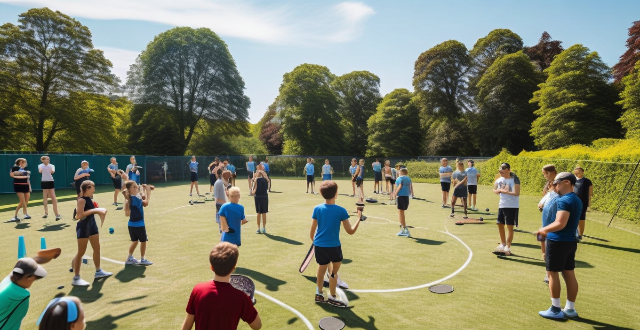
Can team sports or group exercises provide additional cognitive benefits compared to individual activities ?
Team sports and group exercises provide cognitive benefits such as improved social skills, enhanced cognitive functioning, increased self-esteem and confidence, and personal growth opportunities. Participating in these activities helps individuals develop strong communication skills, cooperation, conflict resolution abilities, attention and focus, decision making skills, memory retention, and a sense of achievement. These skills can be applied in all aspects of life, leading to personal growth and development.

How can I meet my favorite idol group after their concert ?
Attending a concert of your favorite idol group is an exhilarating experience. However, the excitement doesn't have to end when the show does. Here are some tips on how you can potentially meet your favorite idols after their performance: 1. Research About Meet and Greet Opportunities: Before buying a ticket, research if the concert organizers offer any official meet and greet packages or opportunities. These may include pre-show sound check participation, VIP packages, and post-show meet and greets. 2. Follow Official Social Media Accounts: Stay updated by following your idol group and the concert venue’s official social media accounts. They might announce last-minute events or changes that could provide opportunities to meet the artists. 3. Arrive Early at the Venue: Being among the first to arrive can sometimes lead to unexpected chances to interact with the idols. Artists often do interviews or photo shoots near the venue before the concert starts. 4. Join Fan Clubs and Forums: Being part of a dedicated fan club or online forum can give you access to insider information about meet and greet opportunities. Experienced fans might share tips on how to approach these situations or inform you about unofficial events where the idols are known to make appearances. 5. Be Prepared with Gifts or Letters: If you do get a chance to meet your idols, consider having a small gift or a heartfelt letter prepared. This can make a lasting impression and might increase your chances of a more personal interaction. Remember to respect their time and privacy. 6. Be Respectful and Patient: Should you find yourself in a position to meet your idols, remember to be respectful of their space and time. Patience is key; don’t rush or push, as this can spoil the experience for everyone involved. 7. Look Out for Unofficial Events: Sometimes, idol groups might visit local restaurants, shops, or attractions after their concerts. Keep an eye out for any hints dropped by the artists or their teams on social media. Being at the right place at the right time could lead to an impromptu meeting. 8. Hotel Lobbies and Exit Points: While it's not advisable to wait outside hotels or exit points with the intention of meeting idols (as it can invade their privacy), some fans have had luck with accidentally encountering their favorite groups in these areas. Always be respectful and keep a reasonable distance.

How can we involve community members in climate adaptation planning ?
Community engagement is crucial for successful climate adaptation planning. To involve community members, identify and engage stakeholders, develop a stakeholder engagement plan, use multiple channels of communication, involve community members in decision making, provide training and education, foster partnerships and collaboration, and monitor and evaluate progress. By doing so, you can create a more resilient community that is better prepared for the impacts of climate change.

How can we measure the effectiveness of community climate adaptation efforts ?
Measuring the effectiveness of community climate adaptation efforts is crucial for understanding their impact on resilience to climate change. Key steps include setting clear objectives, developing relevant indicators, collecting and analyzing data, transparent reporting, evaluating success, iterative improvement, community engagement, and policy alignment. By following these steps, communities can ensure their adaptation efforts are effective and continuously improved.
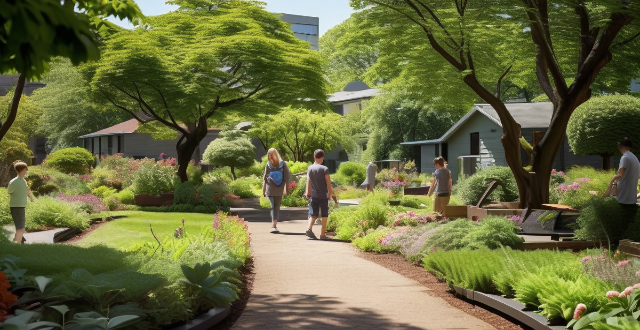
What role do community gardens play in city greening efforts ?
Community gardens play a significant role in city greening efforts by providing environmental, social, economic, and urban planning benefits. These gardens improve air quality, enhance biodiversity, and promote soil health. They also foster community building, offer educational opportunities, and contribute to health promotion. Economically, community gardens provide food security and create job opportunities. Integrated into urban planning, they beautify cities and promote sustainable development. Overall, community gardens are vital for ecological health and improving residents' quality of life.

How do sports events promote social interaction and community building ?
Sports events play a significant role in promoting social interaction and community building. They bring people together, foster a sense of belonging, and create opportunities for individuals to connect with one another. This is achieved through encouraging participation, building community spirit, providing entertainment and recreation, facilitating networking opportunities, and enhancing diversity and inclusion. By bringing people together around a shared passion for sports, these events create lasting connections and positive experiences that extend far beyond the playing field.

In what ways do women's empowerment initiatives contribute to community development ?
Women's empowerment initiatives are crucial for community development as they address gender inequalities and foster inclusivity. These initiatives benefit not only women but also have a positive ripple effect on the broader community, leading to more sustainable and equitable growth. Economic growth is achieved through increased participation in the workforce, entrepreneurship and innovation, and improved household economics. Social development is promoted through health and well-being, education, and gender equality. Political empowerment is enhanced through increased participation in decision-making and promotion of good governance. Environmental sustainability is ensured through resource management and climate action. Cultural preservation and exchange are enriched through artistic expression and cultural exchange. Women's empowerment initiatives are essential for comprehensive community development, addressing gender inequalities, promoting inclusivity, and paving the way for sustainable growth, social cohesion, and a brighter future for all members of the community.

How do sports initiatives support community health and wellbeing in cities ?
Sports initiatives in cities are crucial for promoting physical activity, social interaction, mental health, and overall quality of life. The collaboration between the International Olympic Committee and PATH is a prime example of how these initiatives can make a significant impact on community health. By increasing access to health-enhancing community sport activities, sports initiatives support physical activity, enhance social interaction, improve mental health, raise awareness about health issues, and contribute to economic impact and urban development. These initiatives are valuable investments for city planners and policymakers as they promote community health and wellbeing in urban areas.

In what ways can cultural diversity be embraced to foster social harmony ?
Cultural diversity is a rich tapestry that weaves together various beliefs, practices, and traditions of different groups within a society. Embracing cultural diversity is not just about celebrating differences; it's about creating an environment where everyone feels valued, respected, and included. Here are some ways to foster social harmony through the embrace of cultural diversity: Education and Awareness: Integrate diverse perspectives into the curriculum, teach history from multiple viewpoints, include literature and art from different cultures, encourage student and teacher exchanges, organize international conferences and workshops, partner with schools abroad for virtual interactions. Community Involvement: Host multicultural festivals showcasing different traditions, celebrate national holidays from various countries, organize cultural fairs with food, music, and dance, collaborate on projects that benefit all communities, volunteer in diverse neighborhoods, support local businesses owned by immigrants. Media Representation: Ensure media portrays a wide range of cultural backgrounds, avoid stereotyping and promote accurate representations, include diverse voices in news reporting and commentary, create platforms for underrepresented groups to share their stories, translate important information into multiple languages, use technology to bridge language barriers. Workplace Inclusivity: Implement policies that value cultural differences, provide training on cultural sensitivity and awareness, foster an inclusive environment through open communication, encourage the formation of ERGs for different cultural backgrounds, support these groups with resources and recognition, use ERGs as a platform for knowledge sharing and networking. Legal and Policy Frameworks: Strengthen laws against discrimination based on race, ethnicity or culture, enforce these laws fairly and consistently, educate the public on their rights and protections, implement programs to level the playing field for marginalized groups, address historical inequalities through targeted initiatives, monitor progress and adjust strategies as needed. Interfaith Dialogue: Promote understanding between different faiths, organize interfaith events like dialogues, seminars, and celebrations, educate people about the commonalities across religions, create neutral spaces for people of all faiths to gather, encourage community centers to host interfaith activities, provide resources for religious accommodation in public settings. Artistic Expression: Fund arts programs that showcase diverse artistic traditions, offer grants to artists from minority backgrounds, display public art that reflects the cultural mosaic of the community, curate exhibits that tell the stories of different cultures, make museums accessible to all through free entry days or low admission fees, collaborate with community members in the exhibition process.

Do all merchants accept团购优惠 (tuan gou youhui) ?
Group buying (Tuan Gou) is a popular e-commerce model offering discounted goods and services through online platforms. While not all merchants accept group buying discounts, most major platforms and many businesses participate to remain competitive and meet consumer needs. The development trend of group buying shows it will continue to be an important part of e-commerce in the future.
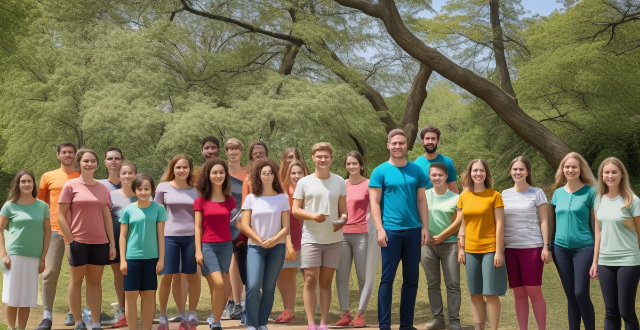
What are some successful examples of sports-based community development initiatives ?
Sports-based community development initiatives have been successful in various parts of the world, bringing people together and fostering a sense of community. Some notable examples include Sport for Social Impact, Right to Play, Sport and Recreation Victoria, and Sport England. These organizations use sports to tackle social challenges such as poverty, gender inequality, lack of education, and physical inactivity. Their programs range from soccer games promoting peace in Israel and Palestine to after-school programs teaching life skills in areas affected by war, poverty, and disease. These examples demonstrate the power of sports-based community development initiatives to bring people together, promote health and well-being, and address social challenges.